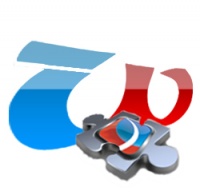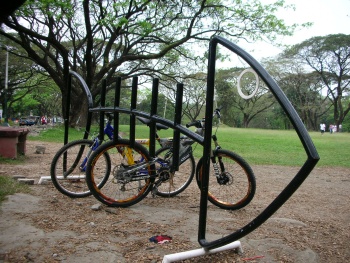Main Page: Difference between revisions
No edit summary |
No edit summary |
||
| Line 30: | Line 30: | ||
::#[[Template:UP Diliman|UP Diliman template]] | ::#[[Template:UP Diliman|UP Diliman template]] | ||
::#[[Template:UP Manila|UP Manila template]] | ::#[[Template:UP Manila|UP Manila template]] | ||
*Existing articles are shown in <font color="#007FFF">blue</font> while non-exiting pages in <font color="#FF0000">red</font>. You may add more details to an existing article but you can initiate new pages by clicking on the red links. You may ask for help by inserting <nowiki>{{help}}</nowiki> on the top of your ''' | *Existing articles are shown in <font color="#007FFF">blue</font> while non-exiting pages in <font color="#FF0000">red</font>. You may add more details to an existing article but you can initiate new pages by clicking on the red links. You may ask for help by inserting <nowiki>{{help}}</nowiki> on the top of your '''[[User_talk:{{PAGENAME}}| talk page]]''' and write your question under it. | ||
|} | |} | ||
{|cellpadding="2" cellspacing="5" style="width:100%; border:1px solid #B1BFA3; vertical-align:top;background-color:#FFFFFF;color:#000; margin:15px 0 0 0" | {|cellpadding="2" cellspacing="5" style="width:100%; border:1px solid #B1BFA3; vertical-align:top;background-color:#FFFFFF;color:#000; margin:15px 0 0 0" | ||
Revision as of 16:50, 2 March 2009

iskWiki!, UP's Community Wiki iskWiki! is a community wiki of the University of the Philippines System. It is a repository of information that may be useful in making University life more productive and fulfilling. Documentation on various projects at the University may also be written on this wiki. |
Did you know?...
|
The Basics |
|---|
Before creating articles, make sure you have done the following:
Creating University of the Philippines System-related articles:
|
Featured Article |
|---|
|
The NEC is housed within the Alfredo Juinio Hall (formerly the National Engineering Center Building), located beside UP COE's Melchor Hall along Osmeña Avenue. As of 2006, the UP College of Engineering Dean, Dr. Rowena Cristina Guevara, also serves as the center's Executive Director. |
Diliman Interactive Learning Center |
|---|
 The Diliman Interactive Learning Center (DILC) of U.P. was inaugurated on 6 October 2003.The DILC was established to assist in designing, developing, and evaluating digital instructional materials for use in the various courses offered in the University. It provides a testbed venue for much needed Filipino produced instructional materials. Moreover, it aims to contribute to the University's research and development efforts by providing facilities and technical expertise to faculty members who are interested in designing and developing digital instructional resources. The DILC provides technical expertise for videoconferencing, developing learning objects, podcasting and other digital instructional materials. DILC is equipped with two computer laboratories ideal for class lecture and training. There is also a multi-purpose room for small group interactions as well as individual study. The production room is equipped with facilities for computer-generated graphics, digital video and audio recording. There are work areas for DILC associates, a conference room, storage facilities for resource materials, offices and a personnel lounge. |
|
|
Created by Jmtirao 08:48, 2 March 2009 (UTC), 02 March 2009



